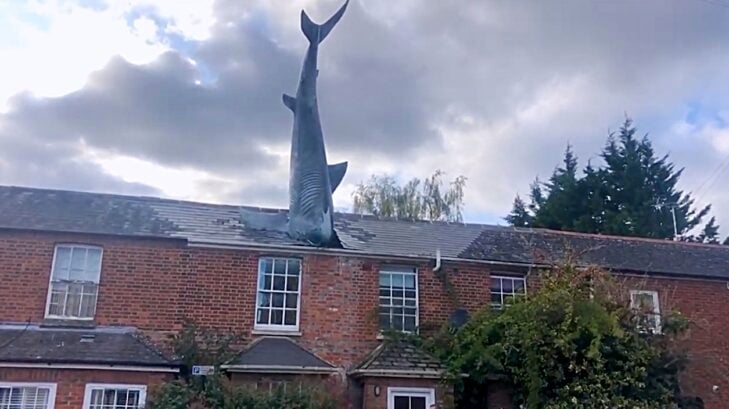34-year-old Magnus Hanson-Heine is the owner of a home with a massive 25ft fiberglass and steel shark art piece sticking out his roof.
Magnus said his father Bill Heine and sculptor John Buckley built the sculpture in secret back on August 9, 1986.
He said they built it in protest to the censorship and government control that was going on at the time. The erection of the sculpture started a six-year-long battle with the city council to keep it.
“This was concentrated around the belief that the government shouldn’t get to decide what kind of art people are and aren’t allowed to see. That it shouldn’t be up to the tastes and whims of a select group of people to decide for others what they can and can’t do with their lives and their homes,” Magnus wrote on his website Headington Shark.
The city council’s case for removing it was escalated while the sculpture quickly gained a lot of national and international attention and eventually escalated all the way up to the national government courts.
The secretary for the environment at the time, Michael Heseltine, finally made a personal visit to the otherwise average house on a quiet residential street in rural Oxford and ruled that it should be allowed to stay.
Now that it has been standing strong for over 36 years, the Oxford City Council has nominated the shark to appear on the Oxford Heritage Asset Register, which is something Magnus says goes against everything the sculpture stands for.
“The fact that it’s wrapped up in this friendly package of ‘there’s this local landmark that everyone loves and here we are protecting it for the future’, it’s quite compelling as a story. If you think of it as a tourist attraction, which I’m sure many people do, then you’ll think what the council is trying to do is a good thing. So you have to be pretty aware of exactly what the shark message is. I think it’s political maneuvring at best and actually it almost feels like they are stealing my house.”
Magnus further explained that one of the reasons his father created the sculpture was to specifically make sure planners couldn’t determine what art people were and weren’t allowed to see.
He says if it becomes a historic, architectural or artistic interest with the Oxford Heritage Asset Register, that means the city will gain control over the site and be able to make modifications to it that “conserves and enhances local character.”
“The city council haven’t given people the option to say ‘no’. It’s easy to laugh when you’re taking something that isn’t yours,” Magnus told The Sun.
Hear More About The Shark House In The Video Below




